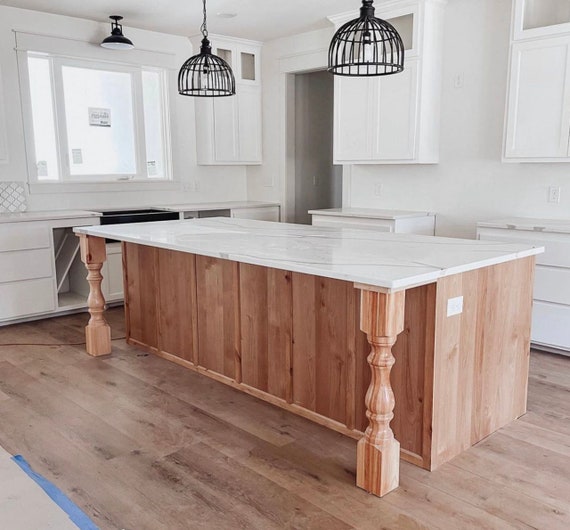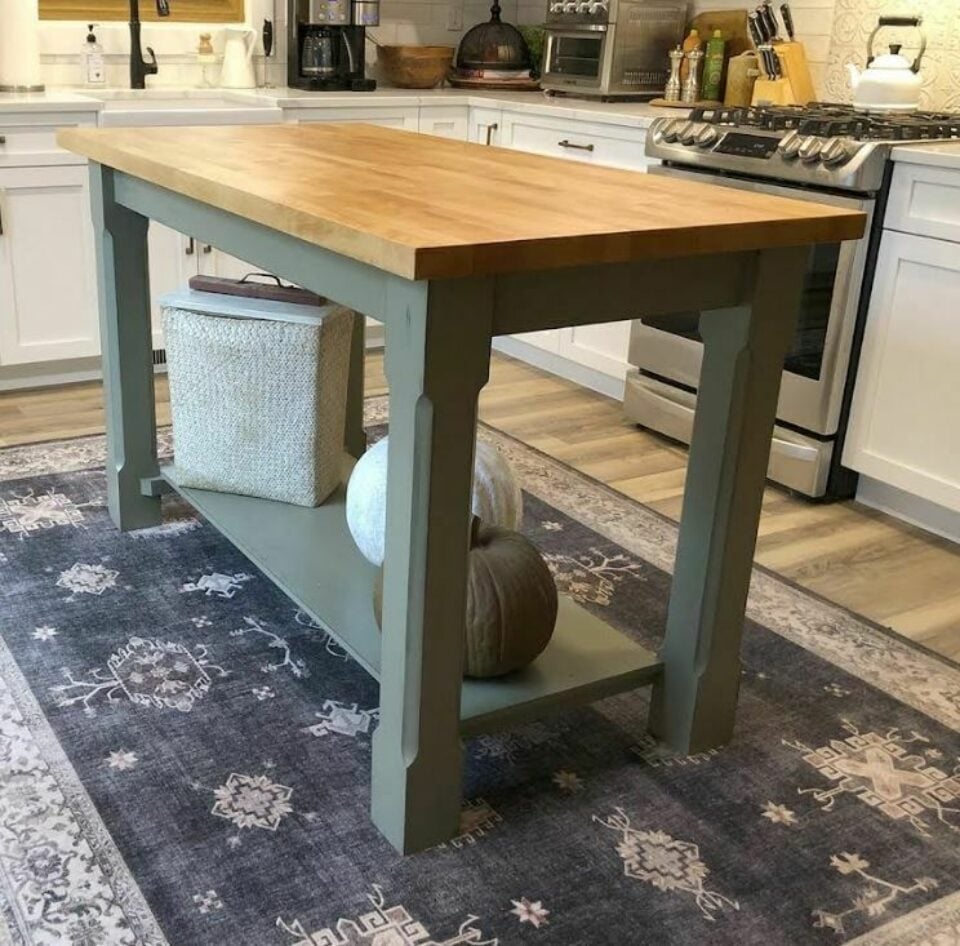Essential Tips for Picking the Perfect Kitchen Island Leg for Your Home
Essential Tips for Picking the Perfect Kitchen Island Leg for Your Home
Blog Article
Discovering the Necessary Functions of a Kitchen Area Island Leg for Your Culinary Space
The kitchen area island offers as a central center in any cooking space, and the option of leg layout is critical in boosting both its performance and aesthetic appeal. Recognizing the important attributes of kitchen island legs-- consisting of material choices, style styles, and stability variables-- can considerably affect the total experience within the kitchen.
Value of Kitchen Island Legs
Kitchen area island legs play an essential function in both the capability and appearances of a kitchen area. They not just sustain the weight of the island but likewise boost the total design, adding to the cooking area's aesthetic appeal. The option of legs can determine the design of the kitchen, be it modern, conventional, or rustic.
Functionally, durable and effectively designed legs guarantee security, permitting the secure use the island for various tasks such as food preparation, dining, or amusing. Strong legs protect against tottering and changing, offering a trustworthy surface area for day-to-day tasks.
Moreover, the height and placement of the legs can influence the comfort level for those seated at the island. A well-considered height can accommodate bar feceses or chairs, advertising an inviting environment for gatherings.
In addition to these useful considerations, kitchen area island legs can work as a prime focus in the area (kitchen island leg). Attractive or distinctly made legs can boost the style aesthetic, making the island a centerpiece. Therefore, selecting the best kitchen area island legs is necessary for stabilizing type and feature in any type of cooking area
Material Options for Legs
Selecting the ideal material for kitchen area island legs significantly impacts both durability and design. Typical product alternatives consist of timber, stone, and metal, each offering distinct benefits.
Timber is a popular selection because of its warmth and versatility. It can be conveniently personalized to match various style styles, from rustic to modern. Hardwoods like oak and maple provide superb stamina and long life, while softer woods can be more prone to tear and put on.
Metal legs are preferred for their sleek, modern-day aesthetic. kitchen island leg. Stainless-steel and aluminum are not just robust yet also immune to rust and rust, making them perfect for kitchen atmospheres. They can create an industrial appearance and are typically available in different coatings to complement various other kitchen aspects
Stone legs, such as granite or marble, add a component of luxury and security. While heavier than other products, they offer exceptional toughness and can endure substantial weight. They may need additional support to make sure proper balance.
Ultimately, the option of material need to line up with both functional needs and the general design vision of the cooking area area, ensuring that the island legs boost both utility and visual appeals.
Layout Styles to Take Into Consideration
What style styles should be considered when picking legs for a kitchen island? The selection of leg style significantly affects the overall visual of your cooking area. For a modern kitchen area, minimalistic and smooth leg designs, such as stainless steel or geometric forms, can improve the modern-day appeal, giving a clean and clean appearance.
On the other hand, typical kitchen areas gain from classic designs such as transformed or carved wood legs, which include warmth and personality. These options commonly feature elaborate information that complement classic home furnishings. For a rustic atmosphere, consider legs made from redeemed wood or wrought iron, which bring a natural, natural quality to the area.
If you lean in the direction of an industrial motif, robust metal legs with a troubled finish may be excellent, offering an edgy yet innovative touch. Additionally, farmhouse design kitchens can integrate beefy legs that stimulate a sense of strength and homeliness.

Elevation and Security Elements
The height and stability of a kitchen area island are vital components that directly impact its functionality and user experience. An optimal cooking area island leg need to give sufficient height to accommodate a variety of tasks, from food preparation to casual dining.
Stability is equally important, particularly as kitchen islands frequently act as prime focus in culinary environments. A stable leg design minimizes wobbling and shifting, which can cause crashes or pain during use. Materials such as strong timber, steel, or a mix thereof are frequently utilized to achieve the necessary strength. The leg's attachment to the island's base must be safe and secure, making certain durability and resilience versus the wear and tear of everyday use.
Modification and Accessories
Customization choices and accessories for cooking area island legs can considerably enhance both the visual appeal and performance of the space. Home owners can choose from a selection of materials, consisting of stone, timber, and metal, permitting seamless assimilation with existing kitchen area decor. The option of finish-- be it an all-natural stain, repaint, or powder coating-- more customizes the appearance, guaranteeing that the island enhances the overall layout theme.
In enhancement to product and finish, house owners might likewise check out the unification of accessories such as attractive brackets, adjustable feet, or incorporated shelving. Brackets can use added support while adding to a modern-day or rustic aesthetic. Adjustable feet are especially valuable for uneven flooring, making sure the island remains secure and degree, which is essential for both security and usability.

Conclusion
To conclude, kitchen island legs serve a crucial duty in providing stability and improving the total aesthetic of the culinary area. The choice of products and layout styles adds to both performance and aesthetic allure, while considerations of height and stability make sure functional usage. Customization choices and accessories can raise the kitchen area island, making it an unique focal factor within the home. Therefore, mindful factor to consider my site of these attributes is essential for an effective kitchen design.
The kitchen area island serves as a central hub in any kind of cooking area, and the option of leg design is pivotal in boosting both its capability and aesthetic charm. Understanding the important features of cooking area island legs-- consisting of material options, layout styles, and security elements-- can considerably impact the total experience within the kitchen area.Kitchen island legs play a crucial duty in both the functionality and appearances of a kitchen area room.What layout styles should be taken into consideration when selecting legs for a kitchen island?In verdict, kitchen area island legs offer an important function in providing security and enhancing the total aesthetic of the cooking space.
Report this page